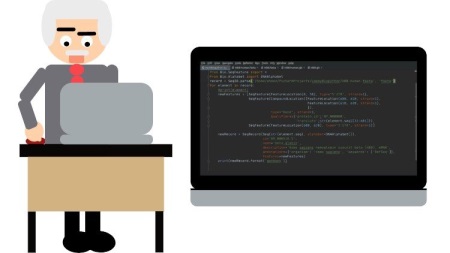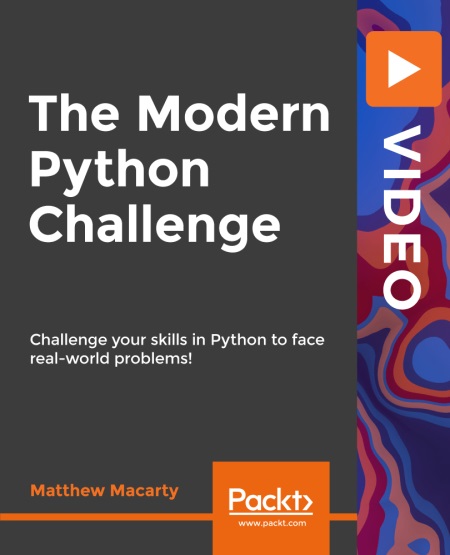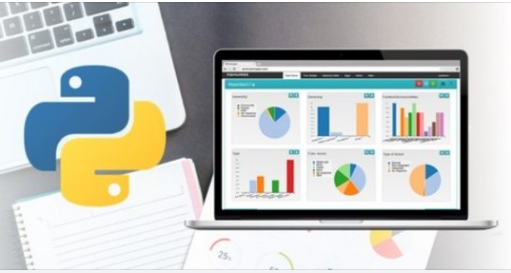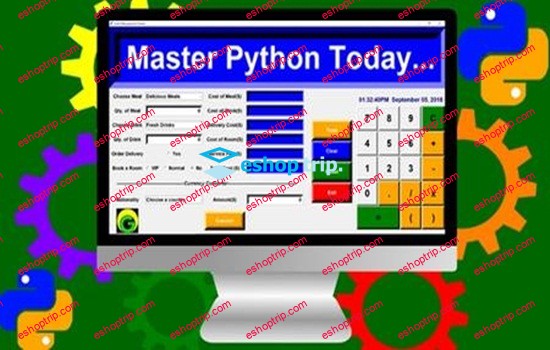Released 5/2024
MP4 | Video: h264, 1280×720 | Audio: AAC, 44.1 KHz, 2 Ch
Genre: eLearning | Language: English | Duration: 226 Lessons ( 20h 51m ) | Size: 4.21 GB
Learn Statistics from an industry expert (and even have fun ?). You’ll learn by building 6 statistics-based projects and solidify your skills with 18 quizzes, practice tests, and challenges. Plus you’ll learn to utilize ChatGPT to work with statistics and conduct data analysis efficiently.
We guarantee you this is the most up-to-date, comprehensive, and FUN way to learn Statistics with Python. This Statistics course is the key building block to launch your career in statistics-heavy fields like Data Analytics, Data Science, and A.I. Machine Learning.
WHAT YOU’LL LEARN
The skills to get hired in statistics-heavy fields like Data Analytics, Data Science, A.I., and Machine Learning
Learn the statistical concepts and skills needed for real-world jobs, including confidence intervals, hypothesis testing, multilinear regression, and cox proportional hazard regression
Learn to use Python from scratch to conduct statistical analysis (no prior knowledge required!)
Learn how to use ChatGPT to work with statistics, clean datasets, and to conduct data analysis more efficiently
Test your knowledge with more than 10 quizzes and practice tests
Build your skills with 6 capstone statistics-based projects including a Virtual Escape Room, Surviving Titanic, and more
Participate in case studies to understand how statistics have real-world impacts
Step-by-step guidance from an industry professional
Why learn Statistics with Python?
Whether you realize it or not…statistics is everywhere around you!
Everything is probabilities and relationships. Statistics is the science and art of collecting, analyzing, interpreting, and presenting data on those probabilities and relationships.
At its core, it aims to derive meaningful insights and make informed decisions based on the data, often amidst the inherent uncertainty and variability.
But perhaps more importantly, it’s important for a huge array of jobs.
Businesses, governments, and organizations frequently use statistics to make decisions, and with the help of statistical tools one can predict future trends, which is essential in fields like finance, economics, and meteorology.
Plus statistics is the foundation for careers in tech like
Data Analyst
Data Scientist
A.I. Machine Learning Engineer
And even non-tech careers like Economists and Financial Analysts!
In fact, there is such a high demand for those with a deep understanding of how to work with statistics that you can even get hired as a pure Statistician that designs surveys, interprets data, and provides insights.
And unlike other online courses and tutorials, you won’t be learning alone.
Because by enrolling today, you’ll also get to join our exclusive live online community classroom to learn alongside thousands of students, alumni, mentors, TAs and Instructors.
Most importantly, you’ll be learning from an industry professional (Diogo) that has actual real-world experience working with statistics in numerous capacities. He teaches you the exact concepts, tools, and techniques he uses in his role.
Finally, this course will be constantly updated as the landscape changes.
As the tools and technologies evolve, we will ensure this course is constantly updated with new lectures and resources so that you will stay at the top of your field.
This course will be your go-to place to get all the latest statistics best practices now and in the future.
Here’s a closer look at what you’ll learn in this Statistics course
This curriculum is very hands-on. But you’ll still be walked through everything step-by-step in a beginner-friendly manner, meaning even if you have no prior knowledge in statistics or python you’ll still have no problems getting up to speed.
You’ll start from the very beginning by teaching you the fundamental building block of statistics and python.
But we don’t stop there.
You’ll then dive into using tools like ChatGPT for data analysis, advanced statistical concepts, building awesome probability-based projects, and working on challenges so that you can understand statistics and python on a deeper level.
Here’s some of the key subjects and skills you’ll be learning
1. Introduction
we’ll start with an overview of the course, guiding you through setting up a Google Account, downloading and setting up course materials, and understanding the significance of statistics with reference to historical events like the Challenger Space Shuttle Disaster.
2. Python for Statistics – Essentials
Dive deep into the fundamental elements of Python, essential for statistical analysis. This includes an understanding of the print and input functions, variable types, arithmetic operations, and control structures.
Practical challenges help reinforce these concepts.
3. Python for Statistics – Intermediate
Build upon the essentials by learning intermediate Python topics like loops, lists, dictionaries, and randomization.
Practical exercises and challenges allow you to apply these concepts, ultimately leading them towards creating useful functions.
4. ChatGPT for Data Analysis
ChatGPT and LLMs have changed the landscape for those working with data. It won’t replace your job, but you need to know how to use it effectively to excel in your job.
Throughout this course you’ll learn the real-world ChatGPT skills needed to work effectively with statistics, manipulate and clean datasets, and conduct data analysis efficiently.
5. Descriptive Statistics
Focusing on descriptive statistical techniques, you’ll learn about different types of variables, populations vs. samples, measures of central tendency like mean, median, mode, and other core concepts.
You’ll also use Python to compute and visualize these statistics.
6. Confidence Intervals
Learn about constructing and interpreting confidence intervals, which provide a range of plausible values for an unknown parameter. This involves understanding standard errors, Z-scores, and other foundational statistical concepts, all while applying them in Python.
7. Hypothesis Testing
Central to inferential statistics, hypothesis testing is explored in-depth here. Learners will familiarize themselves with concepts like p-values, errors, different testing techniques, and apply them using Python.
Real-world case studies like that of Tesla Production give a practical edge to the learning.
8. Multilinear Regression
Dive deeper than simple linear regression by learning about multilinear regression, which employs multiple predictors.
Through Python exercises, students will explore multicollinearity, model optimization, and the significance of predictors, enabling them to glean intricate insights from multifaceted datasets.
9. Logistic Regression
Shifting to binary outcomes, this segment delves into logistic regression, essential for predicting categorical responses.
You will grasp the underlying theory, including the logit function and odds ratios, and apply these in Python to classify outcomes and evaluate model accuracy.
10. Cox Proportional Hazard Regression
Tackle survival analysis via the Cox Proportional Hazard Regression model. Emphasizing proportional hazards assumption, you will immerse in key concepts like hazard ratios and censoring, using Python to handle time-to-event datasets adeptly.
What’s the bottom line?
This course is not about making you just watch without understanding the principles so that when you are done with the course you don’t know what to do other than watch another tutorial… No!
This course will push you and challenge you to go from an absolute beginner to having a deep understanding of statistics and how to utilize them in real-world jobs ?.
How do we know?
Because thousands of Zero To Mastery graduates have gotten hired and are now working at companies like Google, Tesla, Amazon, Apple, IBM, JP Morgan, Facebook, Shopify + other top tech companies.
They come from all different backgrounds, ages, and experiences. Many even started as complete beginners.
So there’s no reason it can’t be you too.
Homepage
https://anonymz.com/?https://zerotomastery.io/courses/learn-statistics-with-python/










